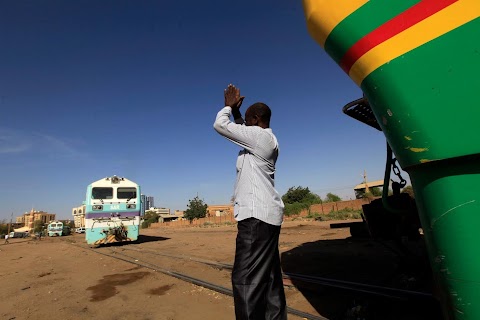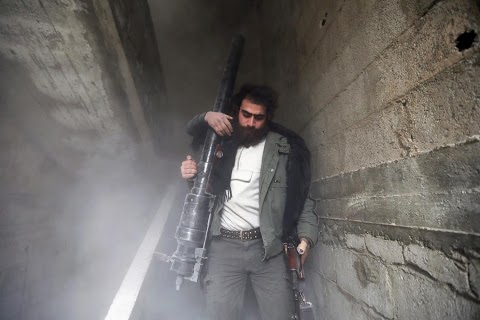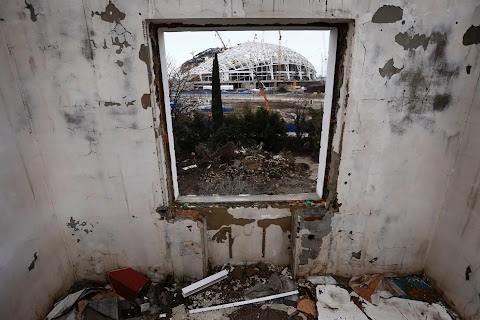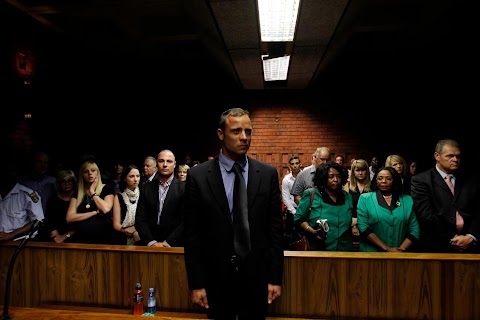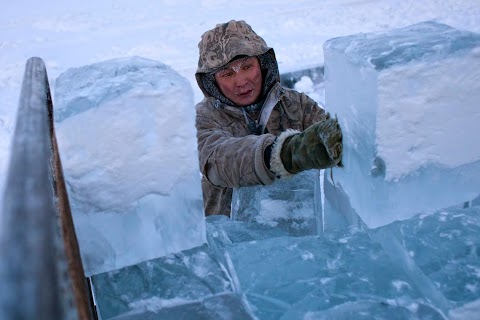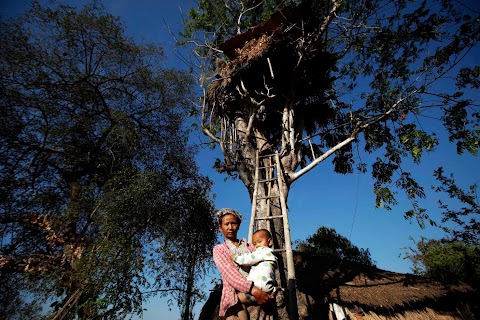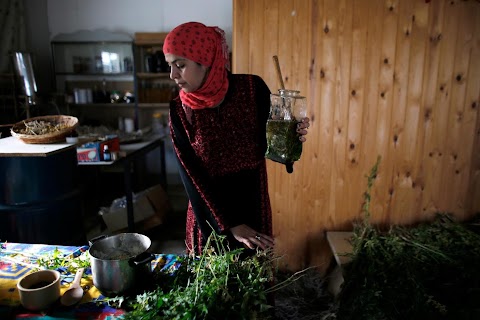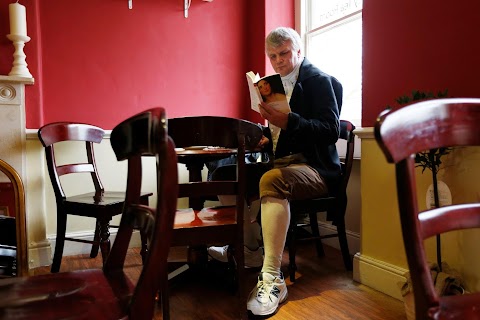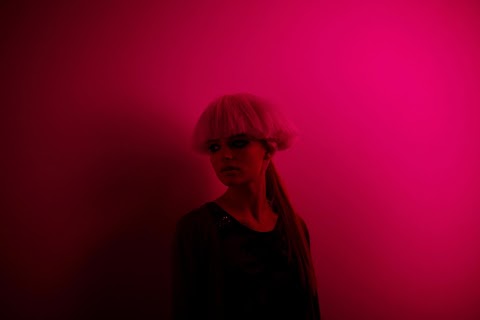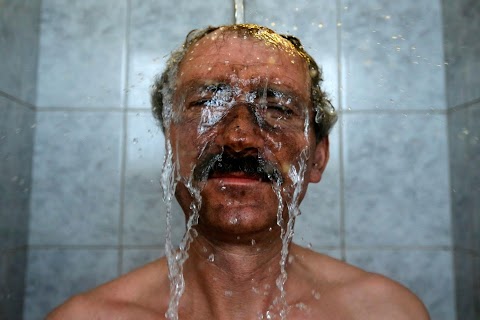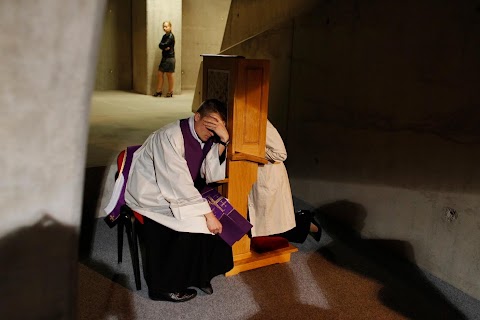
Polish faith
 Kacper Pempel
Kacper Pempel
A priest listens to confession at a church in Warsaw. The scene is a common one in Poland, where some 93 percent of nationals identify themselves as Catholics.
Many Poles responded to Pope Benedict's recent decision to resign with deep emotion - a testament to the strength of Polish faith. But although Catholicism is a powerful force in the country, it is also a changing one, which faces challenges from growing secularism.

A man kneels to pray in front of the picture of former Cardinal Stefan Wyszynski, a religious icon and a man who helped mentor Polish-born Pope John Paul II.
The late John Paul played a significant role in inspiring people to bring about the end of Communist rule and lent fresh intensity to Poland’s long-standing ties with the Catholic Church. His legacy is one reason why religion is such an important issue in the country.
But although Polish devotion remains high by European standards, poll numbers suggest that it is slipping. Since 2005 the number of Poles who pray every day has fallen from 56 percent to 38 percent, according to pollster CBOS. The numbers who take part in a religious service at least once a week fell over the same period from 58 percent of Poles to 52 percent.
Slideshow

A man rides his motorbike down the road past Poland's largest Roman Catholic church, the Basilica of Our Lady of Lichen.

The church stands tall behind a pasture of grazing cows.

Columns loom up in the interior of the Basilica - one of the largest Roman Catholic churches in the world.

A woman holds a set of rosary beads at a monastery.

Priests conduct Holy Mass at the Temple of Divine Providence in Warsaw.

A priest inaugurates new altar boys at the ceremony.

Catholic believers kneel and pray during the celebration of the Assumption of Mary at Jasna Gora Monastery.

A man holds up a picture of Jesus at a street stall by the monastery.

People wait in line for sausages during a picnic after Holy Mass in front of the Temple of Divine Providence.

Children play on a trampoline in front of the church after Mass.

A nun holds up a rosary as she leads a religion lesson at a public elementary school.

A woman waves to pilgrims walking to Jasna Gora Monastery.

A road sign marking the entrance to Swiebodzin, a city near the German-Polish border, shows the figure of Jesus.

Jesus' statue stands tall behind a house in Swiebodzin.

Catholic worshipers hold a decorated picture of the late pope John Paul II as they take part in a night time pilgrimage.

The huge statue of Jesus is illuminated behind Communist-era residential apartments in Swiebodzin.
"The more devout Poles feel that they are under threat, they feel persecuted."
When Pope Benedict XVI announced last week that he was stepping down, the mood in my country, Poland, was overwhelming.
This is one of the most devoutly Catholic countries in Europe, which still proudly identifies itself as the birthplace of Benedict's predecessor, Pope John Paul II. On the day of the announcement my colleagues went to the Church of the Holy Cross in Warsaw. The worshippers coming out were in a state of shock.
"It’s so sad. It’s such a shame. But what can we do? I can’t believe it,” said one woman, who gave her name as Maria, as she left the Holy Cross church in the Polish capital. “I am very sorry because I really like the Pope. He is continuing the teachings of our Pope (John Paul II).”
Janusz, another worshipper, said: “I don’t think it’s true… In my opinion it would not be a good solution. It would definitely be a huge pity for Poles and Catholics.”
I had spent the last few months travelling around Poland taking photographs of Polish people expressing their Catholic faith: going on pilgrimages, attending mass, having religious lessons in schools. I photographed the statue of Jesus in Swiebodzin, near the Polish-German border, which stands 33 meters tall. I visited a huge church built after the fall of Communism in farmland in Lichen, central Poland.
As I drove towards the church, its gold-coloured dome, 98 metres high, looked incongruous surrounded by cows grazing in a pasture. The building was so vast that it dwarfed the worshippers and the village around it. I went to another new church in the Warsaw suburb of Wilanow. Filled with young, middle-class families, it stood in stark contrast to the image many people have of Catholicism in Poland as a religion for the old and the poor.
But one incident sticks in my mind from my time trying to capture Catholicism in Poland. It happened while I was at an open-air mass in Jasna Gora, the holiest site in Polish Catholicism, which attracts hundreds of thousands of pilgrims every year. I was trying to photograph a group of worshippers on the grass. And, as I always do on occasions like this, I was trying to be discreet. But one man, in his 40s and wearing a leather jacket, asked me to stop taking his picture.
"Get out of here," he said. "You're from UB." That was the acronym for the Communist-era secret police, which used to spy on worshippers because they were considered potential subversives. I moved away and started taking pictures of another group nearby.
It is a reaction I often get. There is a divide in Polish society between devout Catholics and the increasingly popular secular movement. Secularism is growing in influence, especially among young Poles. They consider themselves Catholics, but don't go to church every week and do not follow the church's teachings on issues like contraception or in-vitro fertilisation. Because of this change, the more devout Poles feel that they are under threat, they feel persecuted. That, I think, is why they are so suspicious of having their picture taken.
But others are friendly and open. On a pilgrimage last summer from Warsaw to Jasna Gora, I received an extremely warm welcome. The pilgrims, who were mostly students, were travelling hundreds of kilometers on foot. They shared their food with us when they stopped for lunch, and were more than happy to pose for the camera. They had no worries about the ongoing criticisms of the Church, and were not so incensed by the increasingly liberal sentiment in Polish politics.
I got the chance to become a pilgrim myself on a train journey to Rome. Thousands of people crammed the train from Warsaw for the two-day trip in order to attend the beatification mass of John Paul II. As we travelled, the attitude on board was a mix of devotion and obligation; Poles felt that they owed the late Pope their presence in St Peter’s Square for all he had done for their country. Even after the journey, the pilgrims endured ten hours of queuing without sleep or complaint to attend the mass, and I stood alongside them. Their pain and sacrifice still astonishes me today.
Looking back on the months I spent documenting Poland's Catholics, I'm struck by their devotion, and the lengths to which they are prepared to go to show that devotion to God. At the same time, I'm also struck by how wary they are: an island of religion in a sea of secularism.
